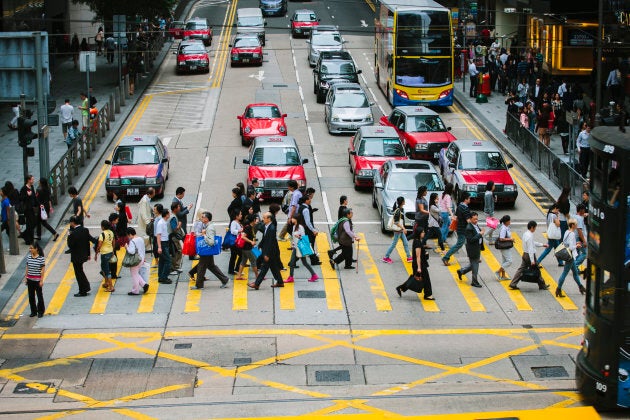There's nothing quite like living in a big city. Everything is close by, transit systems are easily within reach, jobs are aplenty, and there's always something social to undertake. Since the 1950s, more people have been choosing to live in urban environments and the populations in cities are expected to keep rising well into the future.
While there are many positives with living in a metropolis, there are some downsides including a greater risk to health. Several factors have been found to be responsible, such as socioeconomic status, stress levels, and exposure to physical and chemical hazards. The end results of these exposures have been identified as cardiovascular diseases, respiratory ailments, diabetes, cancer and mental health illness. Not surprisingly, these troubles all appear to have higher rates in denser populations.

But a recent study from a group of Korean researchers reveals another possible problem associated with living in a large city. Your skin microbes may be at risk of losing their ability to stay balanced. Based on the results, living in an urban environment could lead to a "fragile microbiome" that could increase the chances for a number of skin ailments and a lack of defence against pathogens.
Normally, our skin is home to a variety of different microbial species. Research has shown the presence of a diverse population of species helps to keep the integrity of the skin intact and prevent the likelihood of infections. A "fragile microbiome" lacks that diversity and as a result, is unable to help as much as it could. When this occurs, several skin problems including dermatitis, psoriasis, dandruff and acne are more likely to happen. For the team, the identification of fragility might offer some hints as to why skin problems seem to occur more frequently in urban environments and possibly how to prevent these troubles from happening.
Several skin problems including dermatitis, psoriasis, dandruff and acne are more likely to happen.
The team focused on several cities in China, including Beijing, which has a population of 21 million people. They also chose smaller cities, including Guangzhou, Xi'an, Kunming and Hohhot. The latter two had populations similar to that of larger Canadian cities like Toronto, Montreal and Vancouver.
The procedure was rather simple in design. The team swabbed the faces of 231 people — 50 per city other than Guanzhou with 31 samples — and then determined the species and diversity of the bacteria present. The hope was to find a link between population size and differences in skin microbial composition. If the team could find different trends, they might be able to find links to suspect issues such as pollution, climate and socioeconomic status.
When the results came back, the team noticed differences in microbial populations based on city size. Those living in the most urban environments tended to have less diversity in their bacterial populations. As expected, a closer look at the microbial populations revealed a collapse in diversity making the microbiome more fragile.

With this result in place, the team attempted to find one or more reasons for the lack of diversity in larger urban environments. This required moving away from the lab and collecting information on the cities themselves. The team acquired information on over two dozen different factors ranging from gross domestic product to rain days to the levels of polluting chemicals. If the group was right, they could find a link between the lower diversity and one or a few of these parameters.
When the results came back, the team had found links. Yet, instead of only one or two, the data revealed 12. The team had no choice but to conclude the simple act of existing in a larger city puts the microbiome and consequently, a person's skin health at risk.
For the authors, this large number of links demonstrates a rather unsettling reality. The skin microbiome is part of a much larger ecosystem comprised not just of our bodies but also the environment around us. Without major changes to the way these cities function, little can be done to reduce the chances for fragility.
More blogs from HuffPost Canada:
Perhaps more troubling, figuring out how to deal with effects of the urban environment on our microbes requires a change of mindset from treatment to lifestyle. We need to look at our bodies as ecosystems and that everything we do can affect the microbial balance. Thankfully, some of the answers include the well-known options including healthy diet and more exercise. These promote a balanced immunity and may offer more support to the skin's ability to stay safe.
As for dealing with diversity, one option might be to get a little more exposure to non-urban environments. The richness of diversity in these areas may offer some solace to your skin and provide it with a little respite from urban exposures. Though such excursions won't reverse the fragility of the microbiome, they may help to give your personal ecosystem a break.
Also on HuffPost: